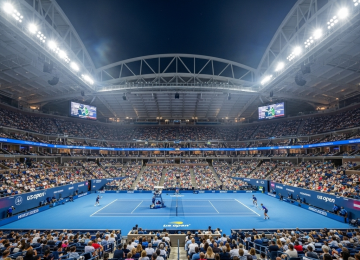5 Key Questions Facing Man United This Summer Season
The curtain has fallen on a turbulent and paradoxical season for Manchester United. An eighth-place finish in the Premier League marked their worst-ever league campaign, yet a stunning FA Cup final victory over rivals Manchester City provided a silver lining and secured European football. As the dust settles, the club stands at a critical crossroads. With the new football operations structure led by Sir Jim Ratcliffe’s INEOS group, this summer is poised to be one of the most significant in the club’s recent history. The decisions made in the coming weeks will define the trajectory of **Man United** for years to come. From the manager’s future to a much-needed squad overhaul, several pressing questions demand answers.
What is the Future of Erik ten Hag at Man United?
Perhaps the most debated topic among the Old Trafford faithful is the future of manager Erik ten Hag. The Dutchman has overseen a season of stark contrasts. On one hand, the team’s league performance was dire, characterized by tactical inconsistency, a shocking number of injuries, and a negative goal difference. The style of play often looked disjointed, leading to heavy criticism from pundits and fans alike. The new INEOS hierarchy is conducting a thorough end-of-season review, and Ten Hag’s position is far from secure as they seek to implement a new, winning culture.

However, the case for keeping Ten Hag is not without merit. He has now delivered two trophies in two seasons, a feat no manager has achieved since Sir Alex Ferguson. His development of young talents like Kobbie Mainoo and Alejandro Garnacho has been a major positive, suggesting a clear pathway from the academy to the first team. Furthermore, he has navigated an unprecedented injury crisis with a degree of resilience. The FA Cup final was a tactical masterclass, demonstrating that he can get it right on the big stage. The key question for INEOS is whether the lows of the league campaign outweigh the highs of the cup victories and youth development. Is he the man to lead this new project, or will the new ownership seek a fresh start with a manager of their own choosing?
Who are the Key Transfer Targets?
Regardless of who is in the dugout next season, a significant squad overhaul is non-negotiable. The INEOS era promises a more strategic and data-driven approach to recruitment, moving away from the scattergun policy of the past decade. Several areas of the pitch require urgent attention. With Raphaël Varane’s departure and Lisandro Martínez’s injury struggles, a top-class center-back is the number one priority. Names like Everton’s Jarrad Branthwaite and Nice’s Jean-Clair Todibo are frequently mentioned as targets that fit the profile of young, ball-playing defenders with high potential.

The midfield also needs reinforcement. Casemiro’s sharp decline in form has left a void in the defensive midfield position, while Christian Eriksen’s influence has waned. The club needs a dynamic partner for Kobbie Mainoo who can control the tempo and provide defensive stability. In attack, another forward is needed to support and provide competition for Rasmus Højlund, who shouldered the goalscoring burden alone for much of the season. A versatile forward like Crystal Palace’s Michael Olise could offer creativity and goals from the right wing, a position that has been a problem area for years. The success of this transfer window will be a major indicator of the club’s new direction, something we discussed in our full Premier League preview.
How Will the INEOS Structure Change Club Operations?
The most profound change at Man United is happening off the pitch. Sir Jim Ratcliffe and his INEOS team have wasted no time in assembling a “best-in-class” footballing structure. The appointments of Omar Berrada from Manchester City as CEO and Jason Wilcox from Southampton as Technical Director signal a clear intent to professionalize the club’s operations. Berrada is highly respected for his role in City’s commercial and footballing success, while Wilcox has a strong reputation for talent identification and development.

They will be supported by Sir Dave Brailsford, the former mastermind of British Cycling’s success, who will bring his “marginal gains” philosophy to all aspects of the club’s performance. As detailed by reputable sources like ESPN, this new structure is designed to create a clear, coherent strategy from the academy to the first team, particularly in recruitment. For years, Manchester United has been criticized for having a muddled structure where managers, executives, and scouts were not aligned. The INEOS model aims to fix this systemic issue, ensuring that every decision is made with a long-term vision in mind. The effectiveness of this new brain trust will be the ultimate determinant of whether United can return to the pinnacle of English and European football.
This summer is more than just a transfer window; it’s the start of a complete cultural reset for the club. The answers to these key questions will reveal whether Man United is finally on the right path to restoring its former glory.















